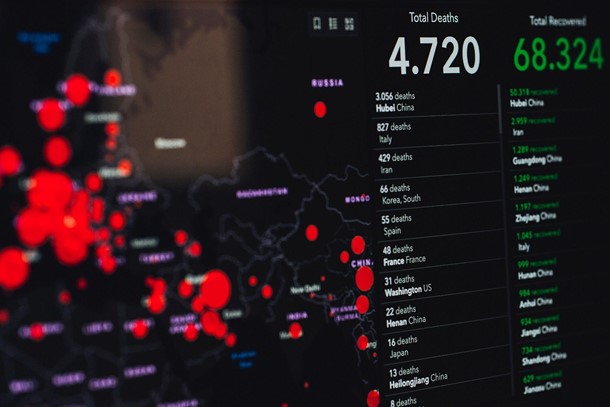Debate on infectious disease has dominated public discourse since the emergence of the novel coronavirus SARS-CoV-2, or COVID-19. This destructive disease has plagued society, causing massive economic consequences and ending millions of lives. Despite the measures different countries have taken to track COVID-19 and stop it, the threat of infectious illnesses will remain so long as climate change is a problem.
But how, you might ask, does climate change have anything to do with infectious disease?
The truth is these disasters are inextricably linked. With deforestation a primary result of our society’s drive to produce and access fossil fuels, the world’s habitats are being compromised, leading to the release of illnesses previously unknown to man. The first step in solving this problem is understanding how and where the connections occur.
We’ll discuss these connections as well as the measures our society can take now to stop climate change and the spread of dangerous diseases.
The Link Between Climate Change and Disease
Advancements in technology and globalization have always gone hand-in-hand with the spread of disease. From the Crusades to the conquistadors, for example, smallpox was transmitted around the world, causing millions of deaths and reshaping the world’s population as we know it. Now, breaches into uncharted territories to harvest the planet’s resources are causing similar problems.
The first link comes through the destruction of natural habitats. Deforestation continues to drive wildlife out from their long-established homes to force previously isolated animals into contact with other creatures. The result is too often the emergence of infectious diseases that human populations do not have antibodies for. COVID-19 was only the latest in a long history of these occurrences.
The Nipah outbreak of 1999 was another example of climate change coinciding with the spread of disease. Rapid clearcutting of Malaysian forests paired with changing temperatures drove fruit bats to new territories. Some took roost alongside a hog farm, and the illnesses carried by these bats made their ways to humans. Over 100 people died.
Additionally, the changing climate itself makes for conditions in which diseases are more capable of spreading. Malaria is one of the most notorious examples of this. The World Health Organization (WHO) says that the spread of malaria is directly influenced by the climate, and current conditions are likely to increase exposure to this deadly disease. By lengthening the transmission season of dangerous illnesses like malaria, climate change threatens the lives and well-being of more people around the world every year.
Now, the WHO predicts that climate change will increase malaria deaths by 60,000 per year between 2030 and 2050. As the world warms, humans and animals must adjust to new climates, and as habitats change, infectious diseases will continue to spread and worsen.
How We Can Prevent Climate and Pandemic Disasters
As we challenge the traditional order that breeds destructive climate change, global public health funding is in a state of crisis. Too many factors, challenges, and needs compete with climate activists for attention, and the resources needed for action are far from widespread. To truly make a difference, we’ll need to transform the state of global trade to introduce new protections for wildlife and the environment.
Here are some of the measures you can support to combat climate change and the corresponding spread of infectious diseases:
1. Divest from fossil fuels.
The first step in breaking the pattern of climate change and the spread of disease must come through divestment from fossil fuels. Our reliance on these limited and carbon-emitting resources is what drives the destruction of natural habitats and keeps progress from occurring. But to achieve divestment, we’ll need to improve the potential and efficiency of green energy sources like solar.
2. Use alternative materials.
Too many of the products we love are grown or sourced in unsustainable ways. From soybeans to toilet paper, harvesting popular goods means cutting into natural forested lands to make way for new farms and to feed herds of cattle. Alternative foods, recycled goods, and sustainable companies can make the difference in habitat destruction, leaving animals in their rightful homes and thereby reducing the spread of disease.
3. Recycle.
Recycling products is a key process in reducing the waste and greed that leads to deforestation and climate change. Toilet paper production, for example, is responsible for uprooting as many as 27,000 trees per day. Buying recycled two-ply toilet paper products can already make a difference. Wherever you can, recycle and support companies that recycle to stop the rapid destruction of our natural resources that drive new diseases out into the public.
4. Stop deforestation.
Preventing deforestation altogether is one of the final steps towards a cleaner climate and a world safer from infectious diseases. Governments all over the world need to come together to create broad policies limiting the harvesting of our forests. In turn, we’ll create a marketplace that incentivizes earth-friendly alternative materials and practices.
5. Understand the science.
Finally, combating climate change and the infectious diseases that come with it requires consulting the experts and science. Epidemiologists, for example, are the public health rock stars who delve into the facts surrounding the spread of disease and recommend steps for preventing it. By adhering to sound science cited by epidemiologists—or even by becoming one yourself—you can help stop both climate change and infectious diseases.
Securing a Safe Future
To make a safer future for current and new generations, we’ll need all the information available on how climate change is linked with the spread of disease. Understanding this connection improves our ability to take protective measures like those listed here. If we can improve our efforts to preserve natural habitats and use sustainable materials, we’ll make great strides in preventing pandemics like COVID-19 from occurring again.
In the meantime, explore alternative and sustainable products while improving your recycling efforts. A better world awaits.

